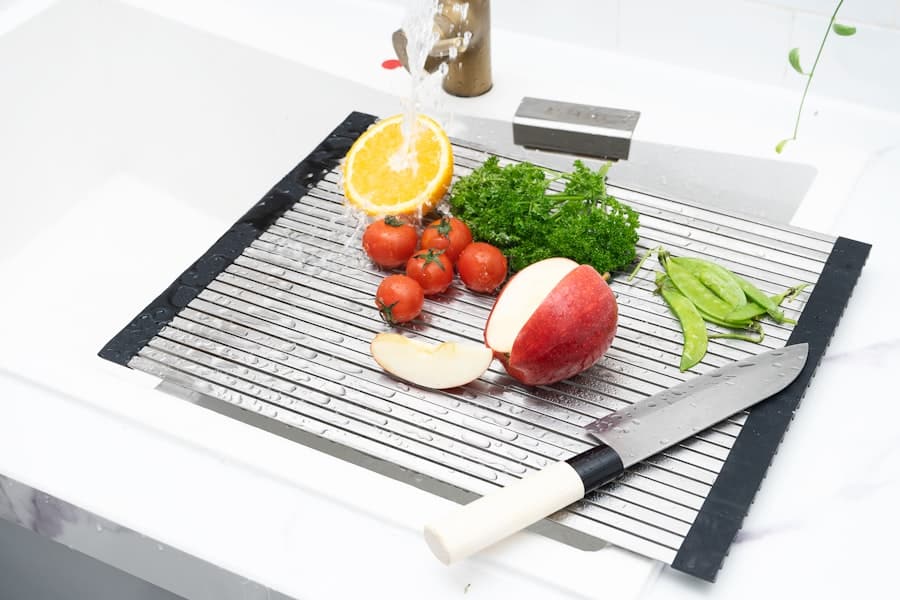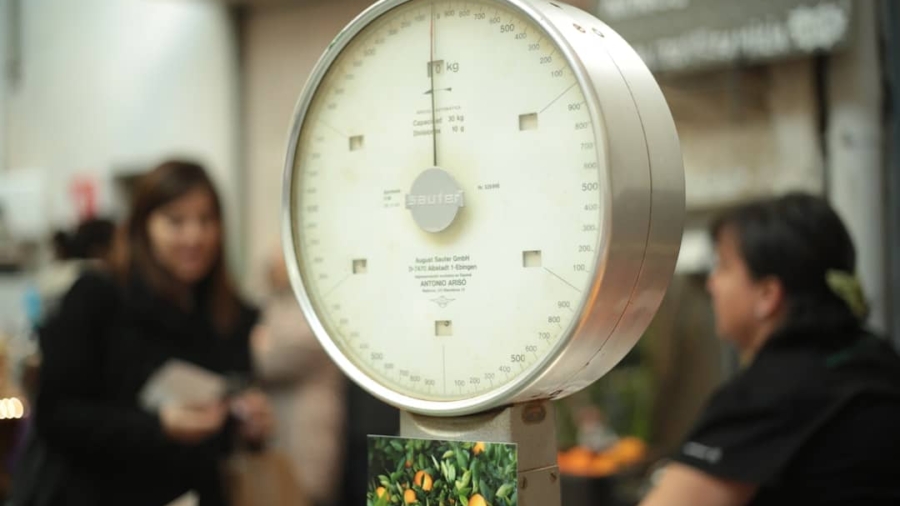The advent of smart technology has revolutionized various aspects of daily life, and the kitchen is no exception. Smart sensors, which are devices capable of detecting and responding to environmental changes, have emerged as essential tools in modern culinary practices. These sensors can monitor a wide range of parameters, from temperature and humidity to the presence of specific ingredients, thereby enhancing the cooking experience and promoting healthier eating habits.
As households increasingly embrace smart home technology, the integration of smart sensors into kitchen environments is becoming more prevalent, offering convenience, efficiency, and improved food safety. The integration of smart sensors into kitchen appliances and tools not only streamlines cooking processes but also empowers users with valuable data. For instance, these sensors can provide real-time feedback on cooking conditions, allowing for precise adjustments that can lead to better culinary outcomes.
Furthermore, they can assist in meal planning by tracking inventory and suggesting recipes based on available ingredients. As consumers become more health-conscious and environmentally aware, the role of smart sensors in the kitchen is likely to expand, making them indispensable allies in the quest for culinary excellence and sustainability.
Key Takeaways
- Smart sensors in the kitchen offer advanced technology to enhance cooking experiences and improve food safety.
- Monitoring and controlling cooking temperatures with smart sensors ensures precise and consistent results for better cooking outcomes.
- Tracking nutritional information with smart sensors helps users make informed decisions about their food choices and dietary needs.
- Smart sensors can detect food allergens, providing a valuable tool for individuals with food sensitivities or allergies.
- By reducing food waste, smart sensors contribute to sustainability efforts and help users save money on groceries.
Monitoring and Controlling Cooking Temperatures
One of the most critical aspects of cooking is temperature control, which directly influences the quality and safety of food. Smart sensors equipped with temperature monitoring capabilities can provide real-time data on the cooking environment, ensuring that dishes are prepared at optimal temperatures. For example, sous-vide cooking has gained popularity for its ability to produce perfectly cooked meats and vegetables by maintaining precise water temperatures.
Smart sensors can monitor these temperatures continuously, alerting cooks if they deviate from the desired range, thus preventing overcooking or undercooking. Moreover, smart ovens and stovetops equipped with temperature sensors can automatically adjust heat levels based on the cooking process. This feature is particularly beneficial for complex recipes that require varying temperatures at different stages.
By utilizing smart technology, home cooks can achieve professional-level results without the constant vigilance traditionally required in the kitchen.
Tracking Nutritional Information

In an era where health and wellness are paramount, tracking nutritional information has become increasingly important for many individuals. Smart sensors can play a pivotal role in this aspect by providing detailed insights into the nutritional content of meals. For instance, some smart kitchen scales are equipped with sensors that can analyze the composition of food items placed on them.
These scales can calculate calories, macronutrients, and micronutrients based on weight and ingredient type, allowing users to make informed dietary choices. Furthermore, smart kitchen applications can integrate with these scales to offer personalized dietary recommendations based on individual health goals. For example, a user aiming to reduce sugar intake could receive alerts when their meal exceeds a certain threshold of sugar content.
This level of customization not only aids in meal planning but also encourages healthier eating habits by making users more aware of their food choices. As consumers increasingly seek transparency regarding their diets, the ability to track nutritional information through smart sensors will likely become a standard feature in modern kitchens.
Detecting Food Allergens
Food allergies pose significant health risks for many individuals, making allergen detection a crucial function of smart kitchen technology. Smart sensors can be designed to identify specific allergens present in food items, providing an added layer of safety for those with sensitivities or allergies. For example, some advanced food scanners utilize spectrometry technology to analyze the molecular composition of food and detect allergens such as peanuts, gluten, or shellfish.
This capability allows users to avoid potentially harmful ingredients before they even reach the cooking stage.
For instance, a smart refrigerator could notify users if they attempt to combine ingredients that contain known allergens with those that are safe for them.
This proactive approach not only enhances food safety but also fosters confidence in meal preparation for individuals with dietary restrictions. As awareness of food allergies continues to grow, the demand for smart sensors capable of detecting allergens will likely increase, making kitchens safer for everyone.
Reducing Food Waste
Food waste is a pressing global issue that has significant environmental and economic implications. Smart sensors can contribute to waste reduction efforts by monitoring food inventory and providing insights into expiration dates and spoilage risks. For example, smart refrigerators equipped with internal cameras and inventory management systems can track the freshness of items stored within them.
By sending notifications when certain foods are nearing their expiration dates or suggesting recipes based on ingredients that need to be used soon, these systems encourage users to consume what they have before it goes bad. Additionally, smart composting systems equipped with sensors can help households manage organic waste more effectively. These systems can analyze the composition of waste materials and provide feedback on how to optimize composting processes or suggest alternative uses for leftover food scraps.
By integrating smart technology into waste management practices, households can significantly reduce their contribution to landfills while also promoting sustainable practices in their kitchens.
Providing Recipe Suggestions and Cooking Tips

The wealth of information available online can be overwhelming for home cooks seeking inspiration or guidance in the kitchen. Smart sensors can simplify this process by offering personalized recipe suggestions based on available ingredients and dietary preferences. For instance, a smart pantry system could analyze what items are on hand and recommend recipes that utilize those ingredients effectively.
This not only minimizes food waste but also encourages creativity in meal preparation. Moreover, smart cooking devices equipped with voice recognition technology can provide step-by-step cooking tips and techniques as users prepare their meals. Imagine a scenario where a home cook is following a recipe but encounters a question about a specific technique; they could simply ask their smart oven for clarification or tips on how to achieve the desired result.
This interactive approach not only enhances the cooking experience but also builds confidence in novice cooks who may be intimidated by complex recipes.
Promoting Safe Food Handling Practices
Food safety is paramount in any kitchen setting, and smart sensors can play a vital role in promoting safe food handling practices. Temperature sensors can monitor food storage conditions in real-time, ensuring that perishable items are kept at safe temperatures to prevent bacterial growth. For example, a smart refrigerator could alert users if the internal temperature rises above recommended levels due to a malfunction or power outage, prompting immediate action to safeguard food safety.
Additionally, smart cutting boards equipped with sensors can provide guidance on proper food handling techniques. These boards could remind users to wash their hands after handling raw meat or suggest appropriate cleaning methods for surfaces that have come into contact with allergens. By integrating educational components into everyday kitchen tasks, smart sensors can help instill best practices in food safety among all household members.
Integrating Smart Sensors into Kitchen Appliances
The seamless integration of smart sensors into kitchen appliances represents a significant advancement in culinary technology. From refrigerators and ovens to microwaves and dishwashers, these appliances are increasingly being designed with built-in sensors that enhance functionality and user experience. For instance, smart ovens equipped with temperature probes can automatically adjust cooking times based on real-time readings from the food being prepared, ensuring optimal results without constant monitoring.
Moreover, manufacturers are beginning to incorporate connectivity features that allow appliances to communicate with one another and with users’ smartphones or tablets. This interconnectedness enables users to control their kitchen environment remotely; for example, they could preheat their oven while still at the grocery store or receive alerts when their dishwasher cycle is complete. As technology continues to evolve, the potential for integrating smart sensors into kitchen appliances will expand further, paving the way for even more innovative solutions that enhance convenience and efficiency in culinary practices.
The future of cooking is undoubtedly intertwined with advancements in smart sensor technology. As these devices become more sophisticated and widely adopted in kitchens around the world, they will continue to transform how we prepare meals, manage our diets, and ensure food safety. The potential benefits extend beyond individual households; as communities embrace these technologies collectively, we may witness significant strides toward reducing food waste and promoting healthier eating habits on a larger scale.
The journey toward smarter kitchens is just beginning, and it promises to reshape our culinary experiences for years to come.
If you are interested in improving your home environment beyond just healthy cooking habits, you may want to check out this article on the best free software for home remodeling. This resource can help you transform your living space into a more functional and aesthetically pleasing area. By utilizing smart sensors in conjunction with these software tools, you can create a truly modern and efficient home.
FAQs
What are smart sensors?
Smart sensors are devices that can detect, measure, and transmit data about their surroundings. They are often used in various applications such as home automation, healthcare, and environmental monitoring.
How do smart sensors support healthy cooking habits?
Smart sensors can support healthy cooking habits by providing real-time feedback on cooking temperatures, ingredient measurements, and nutritional information. They can also help users track their cooking habits and make healthier choices.
What are some examples of smart sensors used in cooking?
Examples of smart sensors used in cooking include temperature sensors for monitoring cooking temperatures, weight sensors for measuring ingredient quantities, and smart kitchen appliances that can communicate with each other to optimize cooking processes.
How do smart sensors improve cooking efficiency?
Smart sensors can improve cooking efficiency by automating certain tasks, providing real-time feedback on cooking progress, and helping users make more informed decisions about their cooking methods and ingredient choices.
Can smart sensors help prevent overcooking or undercooking food?
Yes, smart sensors can help prevent overcooking or undercooking food by monitoring cooking temperatures and providing alerts or adjustments to ensure that food is cooked to the desired level of doneness.
Are there any privacy or security concerns with using smart sensors in cooking?
There may be privacy or security concerns with using smart sensors in cooking, as they may collect and transmit data about cooking habits and food preferences. It is important for users to be aware of how their data is being used and to take steps to secure their smart cooking devices.

